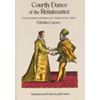Description
Pascale Boquet & Gerard Rebours, “50 Standards of the Renaissance and Baroque”
144 Pages
These 50 ‘Standards’ are presented in increasing order of difficulty, and the musical examples may be used on three levels:
1.- The tunes are often easy, so beginners may play them as written.
2.- Musicians somewhat acquainted with the subject will be able to begin writing a few divisions or variations.
3.- With more experience, players can launch into free improvisation with no “safety net” , as one should.
In addition, whether playing on modern or period instruments, any musician or group will be able to approach this repertoire in the following ways:
– The melodic instruments (flute, violin, viol, oboe.) can play and vary the tunes and dances.
– Polyphonic instruments (keyboard, lute, guitar, harp) may accompany from the figured bass in various ways, and also realise independent versions by playing and varying the two parts at once.
– Low instruments (bass viol, bassoon, cello. . . ) will take the bass line, without neglecting to add their own diminutions and variations.
Lastly, this study provides an opportunity to explore a considerable part of the basic 16th and 17th century repertoire, while going deeper into certain harmonic, melodic and stylistic aspects characteristic of each period, each country and even each composer.





